Post-purchase email campaign|examples, tips
Post-purchase email examples are not just “thank you” messages sent to existing or new buyers. It is a well-established marketing strategy to bring them back to your website and nurture customer loyalty.
This is essential because, according to Harvard Business Review, gaining new customers will cost you up to 25x more than retaining the current ones. So, ultimately post-purchase strategy is your gateway to a long-lasting relationship with a customer.
Unveil after purchase email examples in the article and learn how to craft a compelling purchase follow-up email series.
Post-Purchase Email Categories
There are tons of after purchase email examples with different purposes to include in your email series and send your customers. Mainly, post-purchase emails fall into one of two categories:
- Transactional
- Promotional
When launching your campaign, it is essential that you include after purchase email examples that are both transactional and promotional.
The nature of transactional emails is to inform customers that their purchase or order of a product/service has been acknowledged. It gives peace of mind and fosters greater trust in your brand or company.
As for the promotional ones, the goal is to increase customer retention and customer lifetime value. This is mainly done by offering to upsell or cross-sell incentives, informational materials, or reminders to replenish the service or product.
Now we got the hang of the role of each category, let’s delve deeper to discover what email types each one may include.
Transactional
Whether your company is e-commerce, SaaS, or non-profit, the use of post-purchase transactional emails is absolutely vital. The most common ones are
- Order confirmations
- Booking confirmations
- regular notifications, etc.
Those types of emails acknowledge the customer’s latest action and/or provide the post-purchase critical information. For instance, order confirmation emails are sent when a person buys a product or service on your website by including details such as:
- Order receipt
- Details of the service/product
- Order number,
- Point of contact
Although the primary focus should be to inform them about order details, it does not stop there. Your email may include an on-brand creative design accompanied by a heartfelt thank you message.
Marketing Emails
Not all post-purchase emails have to be transactional. On top of sharing details of the latest action, you may offer incentives, reward programs, and more to help customers stick around.
Promotional emails can serve the purpose of
- Encouraging repeat purchases
- Enhancing word-of-mouth buzz
- Fostering trust and, ergo, enhancing customer loyalty
- Providing a unique chance to upsell or cross-sell
Note that promo emails don’t have to be sent separately. For instance, when you send an order confirmation email, you may seize the chance of upselling or cross-selling by recommending valuable add-ons. Be subtle; you don’t want to turn a simple informative message into a full promo email.
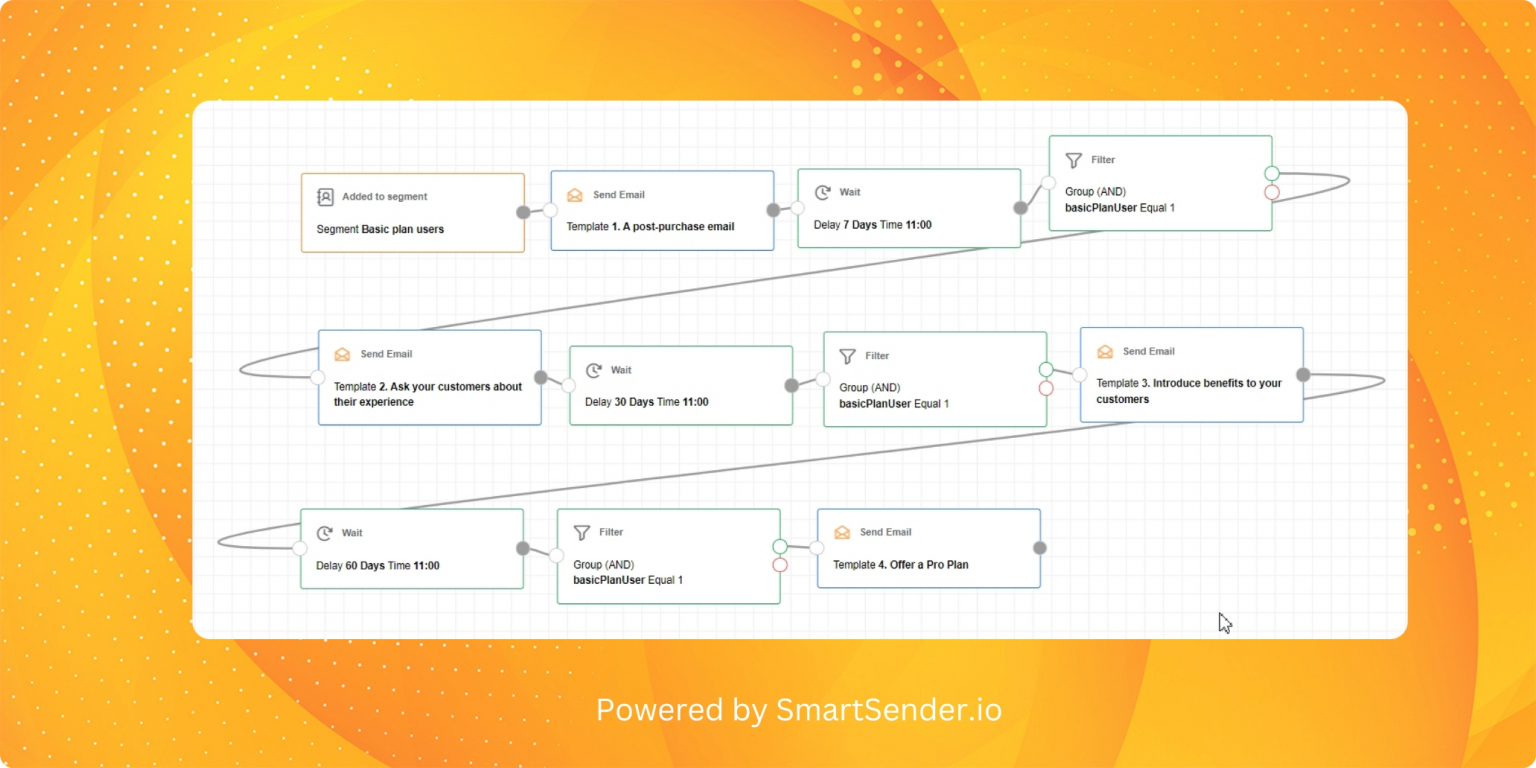
Marketing automation software will be a game changer when sending transactional and marketing emails. Not only does it save a lot of time, but with behavioral segmentation, you will be able to send personalized offers, programs, and deals based on the customer’s experience with your product or service.
Klaviyo reports that post-purchase emails show a 217% open rate compared to generic emails. It goes on to add that when automating post-purchase emails, the open rate will be 17% higher than the average email automation. So, let’s guide you through the steps to launch a powerful email campaign with Smartender.io using a variety of after purchase email examples.
Types of Post-Purchase Marketing Emails
When the engagement of your current or new customer is at its peak, it makes sense to include a well-structured post-purchase email marketing strategy.
This is crucial because, according to Salesforce Research, after a positive experience, 89% of customers said they would likely repurchase products or services. Your email marketing campaign could entail the following:
- “Thank you” notes for purchase, order, registration
- “How to” emails
- Feedback requests
- Referral programs
- Cross-sell, upsell opportunity
- Replenish reminders
- Delight emails with discounts, freebies, or free trial offers of the pro plan
All the listed marketing emails can be sent along with transactional messages once a purchase has been triggered. Let’s see how that works with the Wooxy.com automation platform.
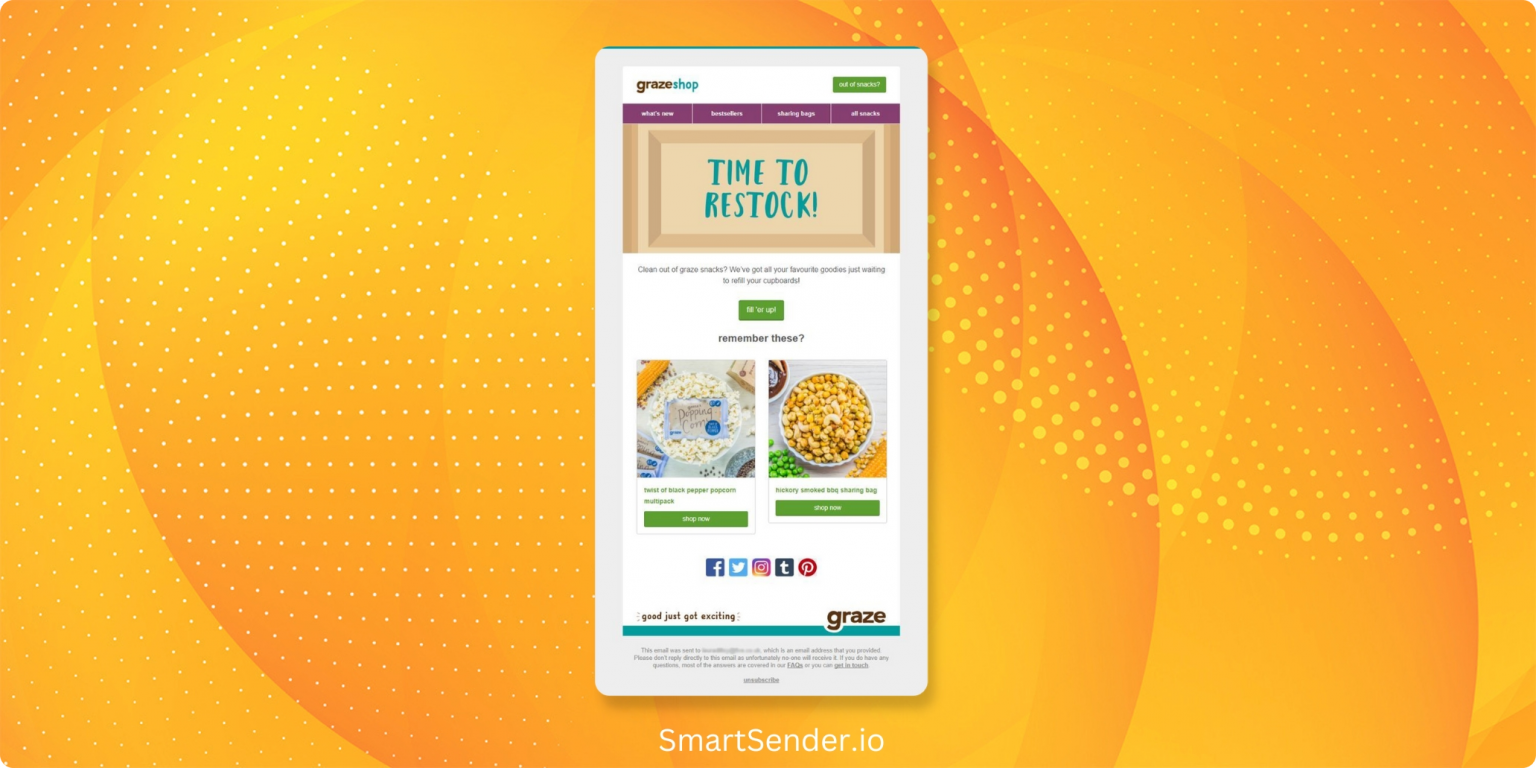
1. Thank you for choosing us!
This is the initial dialogue with your customers and lays the groundwork for a stronger relationship. By sending a detailed, informative email with a thank you message, you show an appreciation for choosing your product or service.
In your message, don’t miss out on sharing every detail your customer might find helpful. It fosters trust in your company/brand, encourages repeat purchases, and increases the customer’s lifetime value.
Pay attention to the wording, such as “community.” It ensures your customer feels engaged and is already part of a big family. On top of that, assign a point of contact who will be there to answer every little query they might have. And above all, don’t forget about a clear and catchy CTA that directs to the customer’s account to uncover in-depth info about their latest purchase.
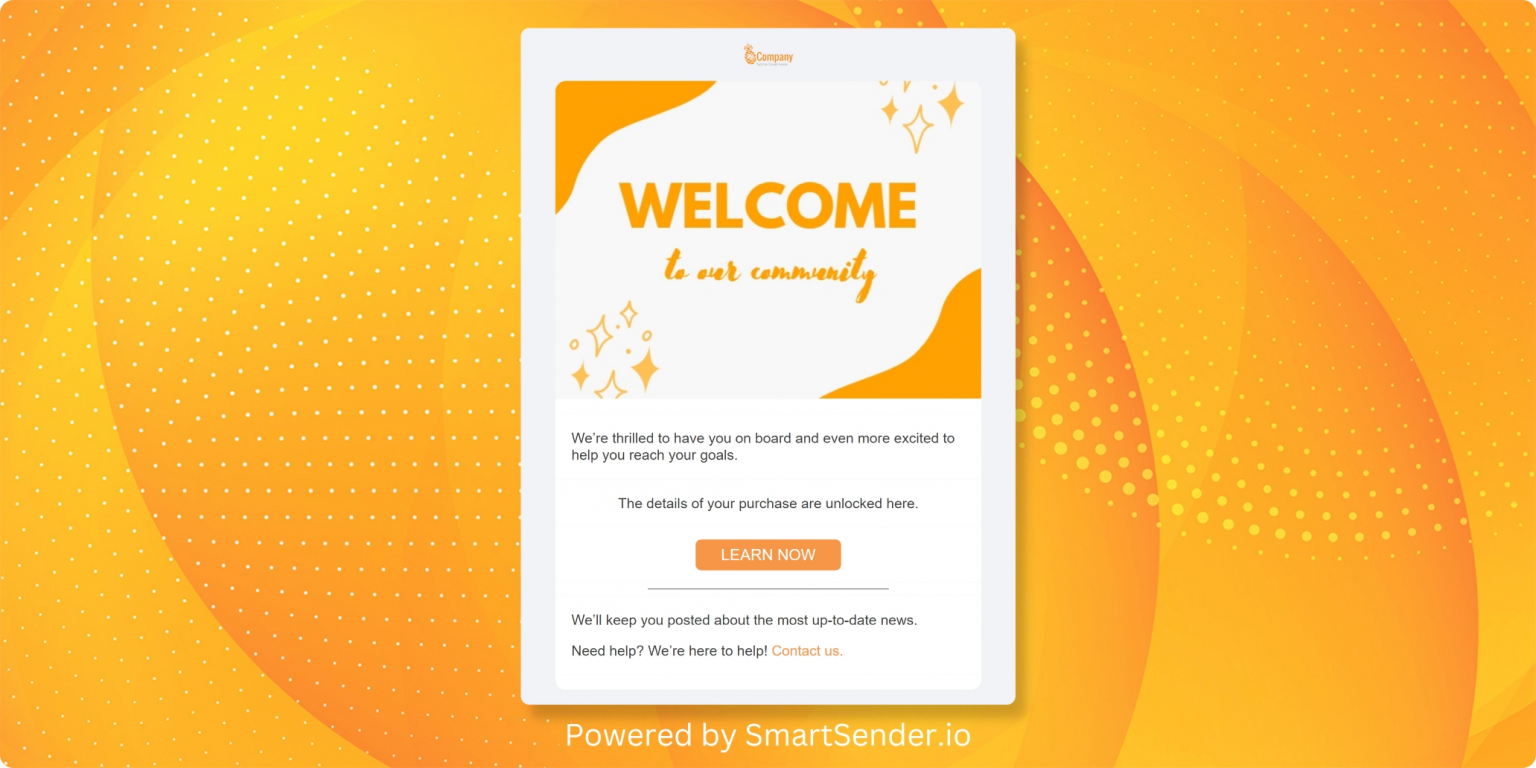
2. Survey Requests
Feedback requests are important because, according to the State of Global Customer Service Report, 77% of clients have a higher opinion of those companies which send the feedback request and act upon it.
Keep in mind that timing is crucial when automating your messages. Wait at least five days after purchase before asking for feedback. The goal is to evaluate the customer’s experience with your product or service and make them feel heard.
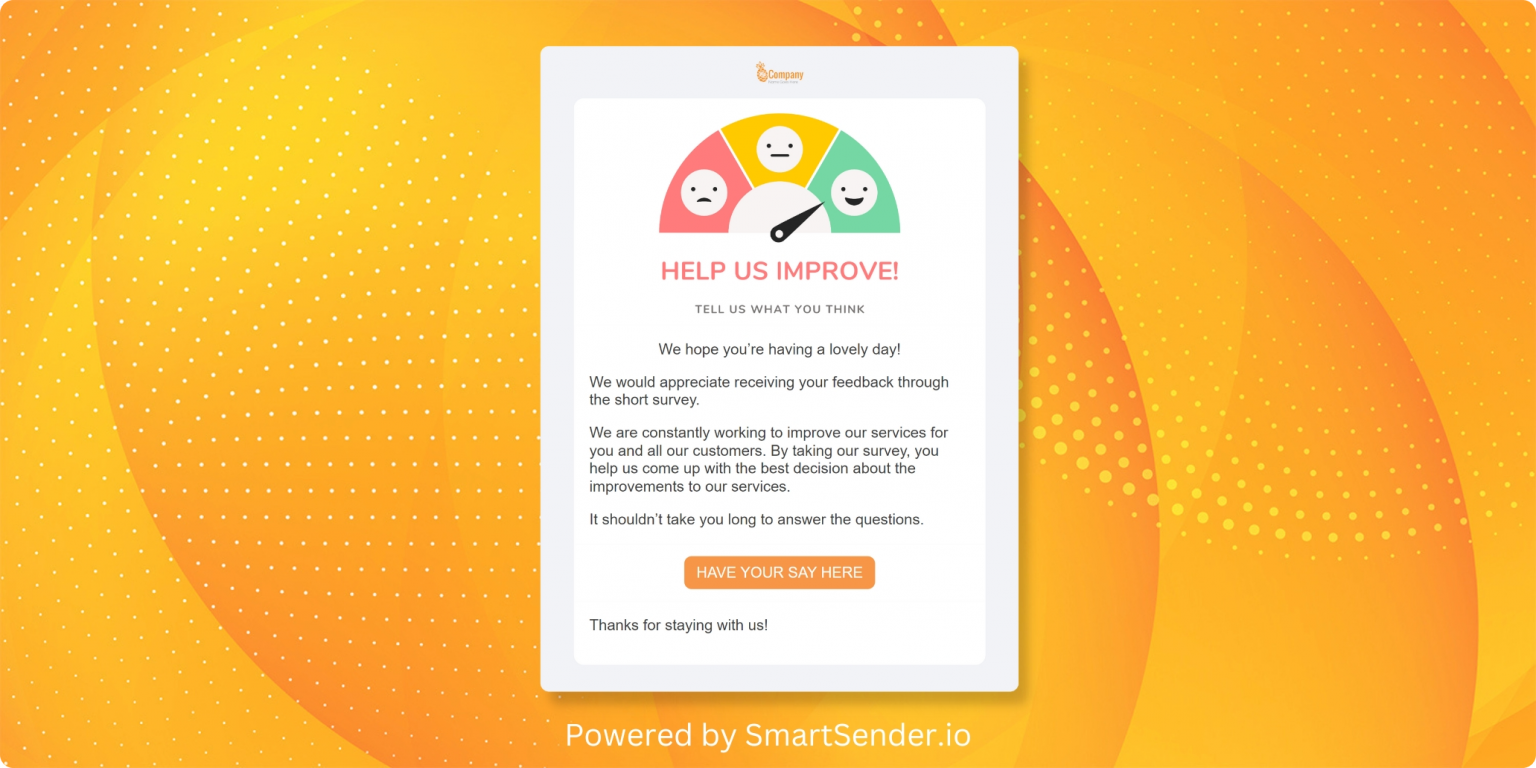
3. “How to” or educational emails
After a purchase, good guidance is necessary to increase your customer retention rate. Customer Onboarding Statistics show that 86% of consumers would stay loyal to a company if they had educational materials received earlier. So, it becomes apparent why you should consider onboarding your clients properly.
Do not limit sending these messages only to new buyers. Your existing customers who bought a new product should be informed too.
In this specific workflow, after a month, 3rd email template is triggered where good-to-know features of their current plan are described. On top of that, educational materials are offered to guide them through the product or service journey.
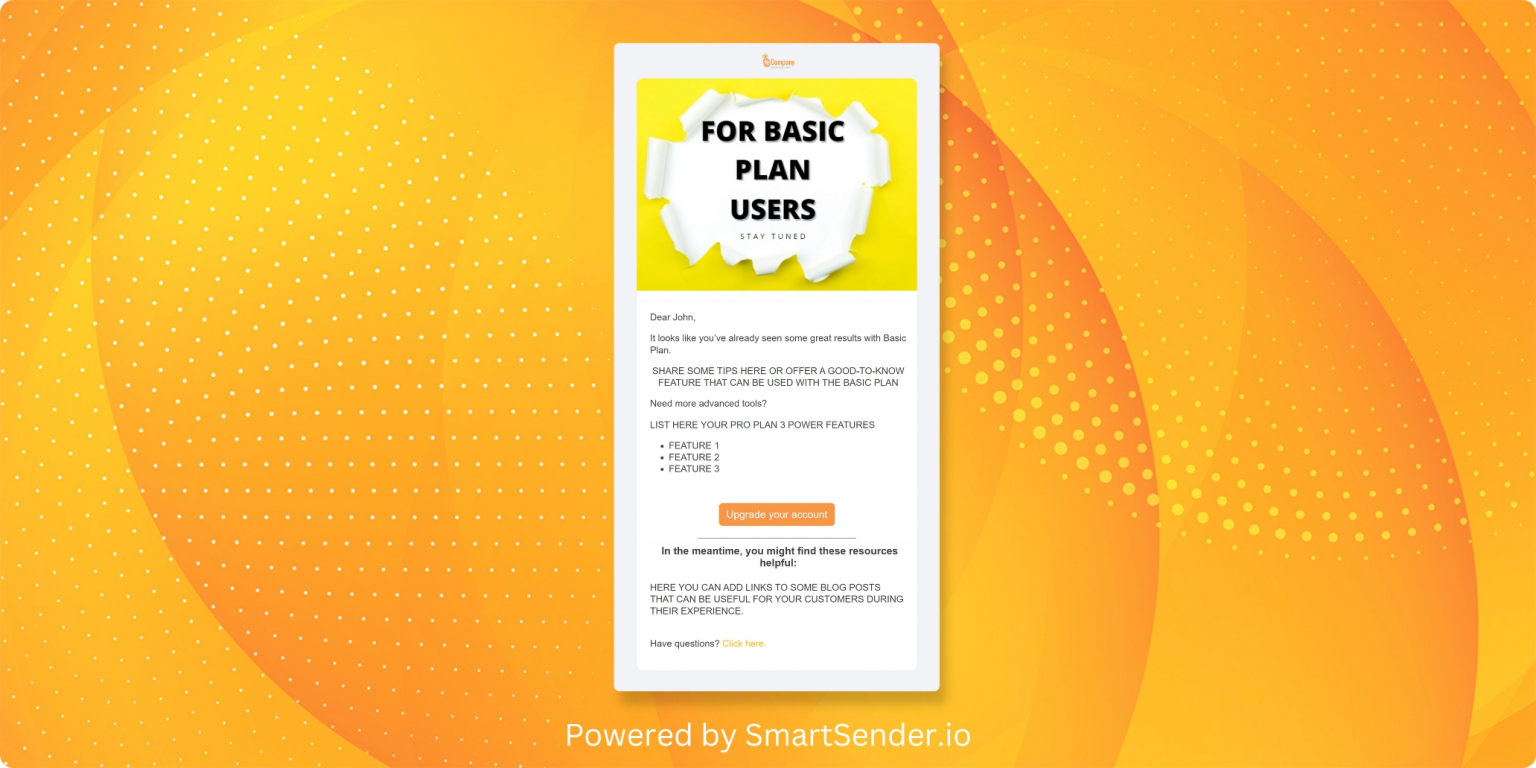
4. Surprise and Delight Emails
You can offer incentives to those customers whose last purchase was 2+ months ago. This encourages further action, such as upgrading their current plan with a discount offer or a free trial of a pro plan. Describe why the upgrade is essential for your customers by listing three or more stand-out features.
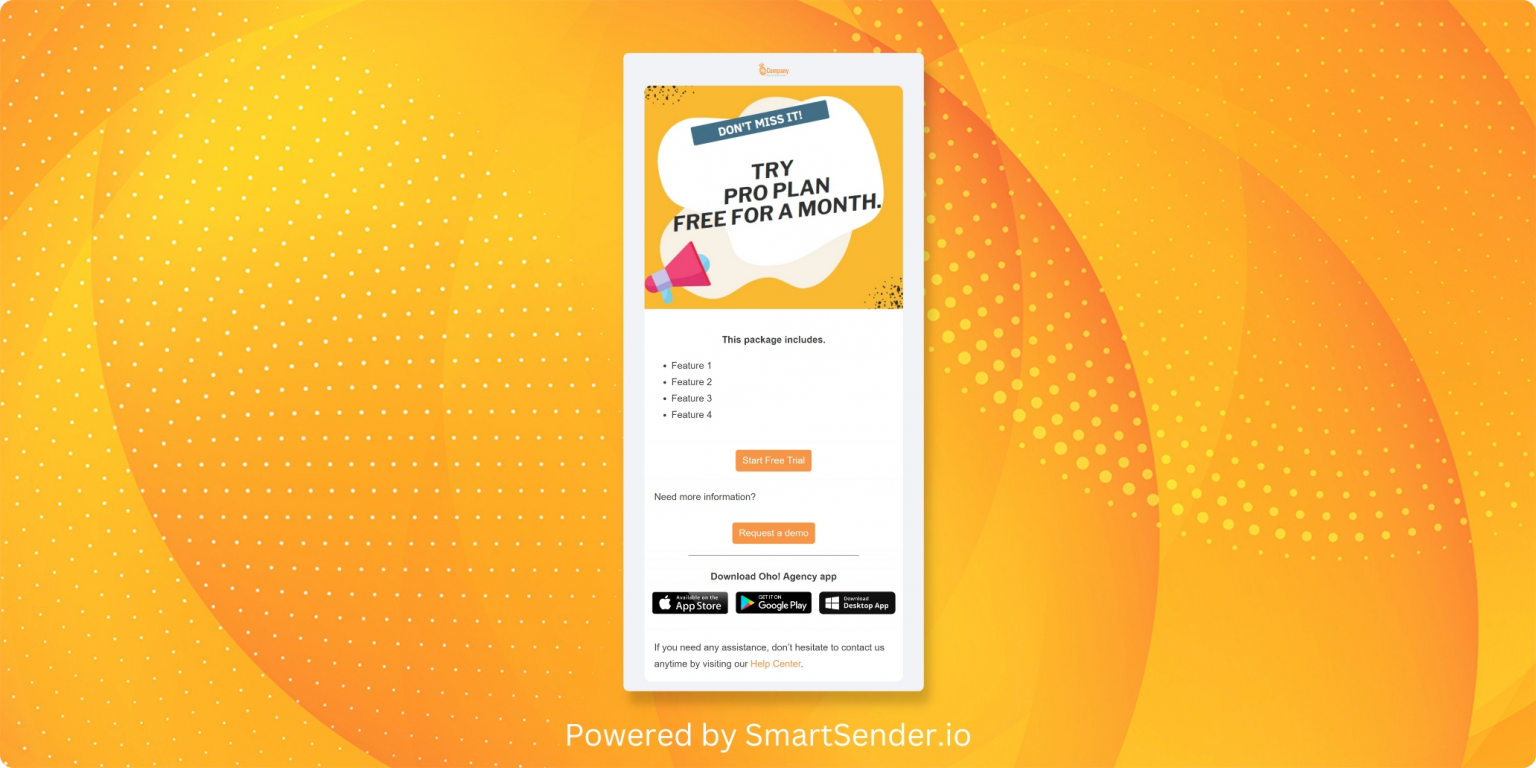
Conclusion
To cut a long story short, post-purchase emails can be categorized into two types:
- Transactional- To provide necessary details of the latest purchase.
- Promotional- To encourage repeat purchases and foster customer loyalty.
It is vital to use data-driven marketing automation software to send personalized post-purchase emails based on your customer’s wants and needs.




